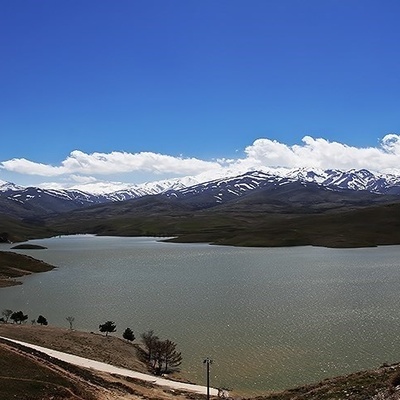For over a century, the mysterious patterns of the Nazca Lines in the deserts of Peru have captivated archaeologists; however, now, artificial intelligence has opened a new chapter in deciphering this ancient civilization by uncovering stunning hidden geoglyphs.

According to the history service of Saadnews, for over a century, the mysterious Nazca Lines in Peru have astonished archaeologists. These massive geoglyphs, created by the Nazca people between 200 BC and 650 AD, cover vast areas of desert and depict animals, plants, and tools. Many of these intricate designs, visible only from the sky, have long remained beyond full understanding.
Now, a collaboration between archaeologists and artificial intelligence has led to the discovery of 303 new geoglyphs in just six months, doubling the known count. This breakthrough, made possible by artificial intelligence, offers fresh insights into the purpose of these lines, which have long been a topic of debate. This discovery represents a significant leap in solving one of the greatest archaeological mysteries.

Artificial Intelligence in Archaeology
The power of AI in archaeology Researchers, including Professor Masato Sakai from the Nazca Institute at Yamagata University in Peru, have collaborated with scientists from IBM to teach AI how to analyze vast amounts of aerial imagery and identify previously hidden geoglyphs. This collaboration has significantly accelerated the process, allowing investigations to be completed in a fraction of the time usually required. As Sakai explains, the ability to achieve this in such a short time is thanks to the use of AI.
AI not only helps identify more geoglyphs but also changes the way archaeologists approach the study of ancient civilizations. By processing aerial images, AI can detect patterns that might otherwise remain hidden to the human eye, offering a more efficient and accurate way to map and understand historical remains.
The success of AI in the Nazca desert is just the beginning, as this technology is already being used at other archaeological sites around the world, from burial mounds to sunken ships.

A revolution in studying ancient civilizations The Nazca Lines represent one of the first successful applications of AI in archaeology. These lines, created by scraping away the upper layer of soil to reveal lighter material beneath, are complex and precise, showcasing the Nazca people's advanced understanding of geometry and proportion.
Maria Reiche, a German mathematician and astronomer, spent decades studying these lines and noted their flawless proportions. Now, AI is helping us discover more patterns in these lines and shed more light on their potential meanings and functions.
Historically, archaeologists relied on traditional methods such as ground surveys, photography, and manual mapping to study these ancient sites. However, as Dr. Zhao Fonte, an archaeologist at ERA Arqueologia, points out, archaeology is truly at the forefront of innovation when it comes to adopting digital tools.
In addition to AI, archaeologists now use photogrammetry and remote sensing technologies, which allow them to study vast areas more quickly and accurately.

New insights into the purpose of the Nazca Lines One of the most intriguing aspects of this AI-based discovery is the potential for a better understanding of the purpose of the Nazca Lines. Sakai's team suggests that many of the newly discovered geoglyphs may have been part of ritual pathways, where people walked along the lines to interact with the landscape and communicate with the gods. AI's ability to identify these new sites has helped confirm that the geoglyphs were not only artistic expressions but also spiritual and cultural symbols.
AI's ability to process large datasets and identify geoglyphs that may have previously gone unnoticed opens up new possibilities for understanding the relationship of the Nazca civilization with their environment, as well as their advanced knowledge in spatial design and astronomy.
The Future of AI in Archaeology While AI has already revolutionized the study of the Nazca Lines, this technology holds immense potential for the future of archaeology. Dr. Alexandra Caramitro, an AI and archaeology specialist at the University of Southampton, is developing tools that can help archaeologists identify a wider range of historical sites.
Her work shows that AI can not only detect visible features like geoglyphs but also interpret the complex relationships between these sites and other environmental factors, such as their proximity to water or their position on a hill slope.
Applications of AI in archaeology go beyond geoglyphs and ancient art. In 2023, researchers from the UAE used AI to analyze satellite data from the Saruq al-Hadid site, a copper smelting center dating back to 1270-800 BC.
AI provided insights into the distribution of artifacts, helping archaeologists prioritize their excavation efforts. This technology can also assist in the study of sunken ships, buried cities, and even the effects of climate change on archaeological sites.

The risks and limitations of AI in archaeology Despite promising results, AI is not flawless. Sakai's team had to manually verify AI's predictions, carefully examining dozens of suggestions for each new geoglyph. Dr. Caramitro says, "AI is not perfect, especially in archaeology. But in the coming years, we may be able to develop algorithms with much higher accuracy that will help save time, energy, and costs."
As AI technology improves, its accuracy is expected to increase, allowing archaeologists to explore more areas with fewer resources. The ability to automate site detection could dramatically speed up and expand archaeological research, uncovering hidden treasures and revealing the secrets of ancient civilizations.

